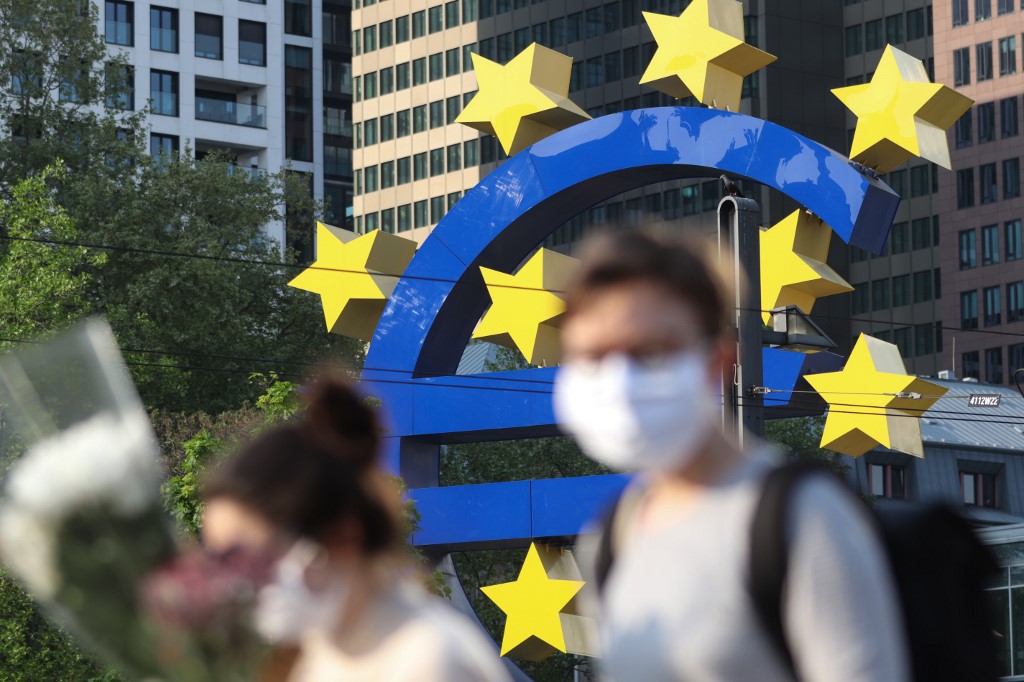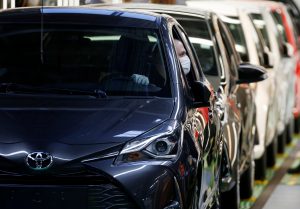The European Central Bank has launched a series of never-before-seen measures to cushion the economic blow from the coronavirus pandemic but it looks set to reaffirm on Thursday it will do more still, even if some of the options appear limited.
Here is what the ECB has done so far and what could be coming next:
Big-bang bond buys
On March 18, financial market panic pushed central bank chiefs into announcing a mammoth 750-billion-euro ($810 billion) bond-buying programme without waiting for a regular monetary policy meeting.
Coming on top of an existing “quantitative easing” (QE) scheme, the Pandemic Emergency Purchase Programme (PEPP) will buy up government and corporate debt worth around 1.1 trillion euros this year so as to flood the system with cheap money.
The ECB decided not to retain its self-imposed limits on how much of each country’s debt it can buy for PEPP, allowing it to focus purchases on the worst-hit economies such as Italy.
ECB head Christine Lagarde has also announced massive new rounds of cheap lending to banks beginning in June.
The ECB last week said it would accept bonds as collateral for that lending scheme even if private-sector credit rating agencies downgrade them to so-called “junk” status which would normally bar such a move.
More purchases?
But “the ECB could well be forced soon to pull another trick out of its hat in an effort to impress markets and calm growing debt sustainability concerns,” Allianz chief economist Ludovic Subran said.
Germany, Italy, France and Spain among the 19-nation eurozone must issue more than one trillion euros of debt to bolster their promised safety nets against mass bankruptcies in their shutdown economies.
Thursday could also bring a discussion among governors on extending PEPP to restore confidence, Capital Economics analysts suggested.
That could include allowing the ECB to buy “junk”-rated debt under its QE programmes, something that it has ruled out until now.
Blue-sky thinking
Since 2012, a crucial arrow has sat unused in the ECB’s quiver – the so-called “OMT” or Outright Monetary Transactions programme that provides in a crisis for unlimited purchases of debt from a specific country.
Normally the nation concerned would first have to accept an aid programme from the EU’s bailout fund, the European Stability Mechanism, whose conditions of harsh economic reforms make it politically toxic for leaders in Rome and elsewhere.
There has been much discussion recently over using ESM funds but not insisting on the reform conditions.
Meanwhile, European treaties forbid so-called “primary market” purchases of debt directly as governments issue it, Lagarde recently recalled.
A more classic monetary policy lever could see the ECB lower the interest rate on banks’ deposits in Frankfurt from its present minus 0.5%, to encourage lending.
But financial firms have long complained of the burden placed on their shoulders by negative interest rates.
Political laggards
Lagarde warned national leaders last week of the danger of doing “too little, too late” as the European Union faces the prospect of the worst recession since its beginnings in the post-World War II period.
EU leaders agree hundreds of billions of euros in rescue funds will be needed but they disagree over how the aid package should be financed and shared. Many countries remain frozen along north-south battle lines dating back to the 2008-09 financial crisis when Brussels demanded stiff terms in return for bailouts.
Lagarde is likely to issue a strong public appeal at her Frankfurt press conference on Thursday for national capitals to overcome their differences.
“The less EU leaders achieve, the more the ECB will have to do,” Capital Economics said.
AFP
























